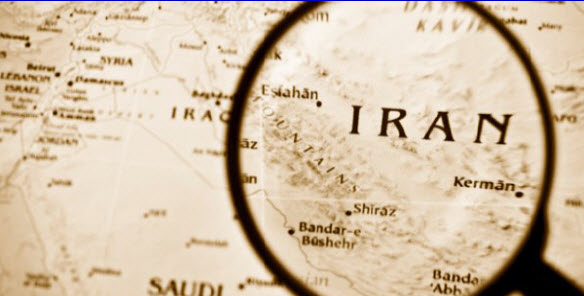
Six Achievable Steps for Implementing an Effective Verification Regime for a Nuclear Agreement with Iran
Now that an agreement has been reached between the P5+1 and Iran, a non-partisan task force convened by FAS has published Six Achievable Steps for Implementing an Effective Verification Regime for a Nuclear Agreement with Iran, a report that addresses anticipated implementation challenges and offers findings and recommendations for strengthening the implementation process both internationally and within the United States.
Over the last 20 months, Iran has been in negotiations with the P5+1 regarding its nuclear program, culminating in an agreement on July 14, 2015 that was memorialized in a 159-page text. The essence of the agreement is that Iran has offered the P5+1 constraints on its nuclear program in exchange for sanctions relief. As part of these negotiations, in paragraph iii of the Preamble and General Conditions, “Iran reaffirms that under no circumstances will Iran ever seek, develop or acquire any nuclear weapons.”
The negotiation process and the resulting agreement posed a critical question for the United States’ political and scientific communities: What monitoring and verification measures and tools will the United States, its allies, and the International Atomic Energy Agency (IAEA) require for a comprehensive and effective nuclear agreement with Iran? Although it is resoundingly clear that this issue is a sensitive and controversial one and there is discrepancy on the “wisdom, scope, and content” of a possible agreement with Iran, there does appear to be a general consensus that effective implementation is as important as the agreement itself, and an agreement with Iran without effective verification and monitoring measures “would be counterintuitive and dangerous” and would have negative long-term effects for all associated parties.
To examine and scrutinize these issues, the Federation of American Scientists (FAS) convened the Verification Capabilities Independent Task Force that released a report last September titled Verification Requirements for a Nuclear Agreement with Iran. This new report, Six Achievable Steps for Implementing an Effective Verification Regime for a Nuclear Agreement with Iran, further dissects the issue and discusses potential strategies for successful implementation of the verification regime associated with the recent agreement.
This phase of the Task Force’s study focuses on the anticipation of implementation challenges and offers findings and recommendations for strengthening the implementation process both internationally and within the United States. The report emphasizes six feasible steps for executing a strong verification regime for a nuclear agreement with Iran:
- Ensure that the Joint Commission Works Effectively Among the P5+1 and Iran to Facilitate Compliance and Communication
- Organize Executive Branch Mechanisms to Create Synergy and Sustain Focus on Implementation Over the Long-Term
- Support and Augment the IAEA in the Pursuit of its Key Monitoring Role
- Create a Joint Executive-Congressional Working Group (JECWG) to Facilitate Coordination Across the Legislative and Executive Branches of the USG
- Prepare a Strategy and Guidebook for Assessing and Addressing Ambiguities and Potential Noncompliance
- Exploit New Technologies and Open Source Tools for Monitoring a Nuclear Agreement with Iran
The report was released to the public on Thursday, August 6, 2015 and the Task Force hosted a panel discussion in Washington, D.C. later that day to present their findings and discuss possible implications of the agreement. Over 50 attendees from the political, scientific, and NGO circles gathered to express their thoughts and share their opinions on the issue at hand.
In other relevant news regarding scientists and the agreement with Iran, 29 of the nation’s top scientists — including Nobel laureates, veteran makers of nuclear arms and former White House science advisers — wrote to President Obama on Saturday, August 8 to praise the Iran deal, calling it “innovative and stringent.” While many of those who signed the letter are prominent FAS members and affiliates, such as the lead writer Dr. Richard L. Garwin, who serves on the FAS Board of Directors, Dr. Frank von Hippel, who has served as chairman of the FAS Board, and Dr. Martin Hellman, who is an FAS adjunct senior fellow, FAS, as an organization, has not taken an organizational stance either for or against the deal. As indicated by the report released by FAS on August 6, the Task Force convened by FAS supports providing research, guidance, and recommendations for implementing an effective verification regime for a nuclear agreement with Iran. Scientists with nuclear expertise and scientifically credible analysis must continue to serve as essential components to a strong nonproliferation system that allows nations to use nuclear energy peacefully as long as safeguards commitments are upheld.
Successful NC3 modernization must do more than update hardware and software: it must integrate emerging technologies in ways that enhance resilience, ensure meaningful human control, and preserve strategic stability.
The FY2026 National Defense Authorization Act (NDAA) paints a picture of a Congress that is working to both protect and accelerate nuclear modernization programs while simultaneously lacking trust in the Pentagon and the Department of Energy to execute them.
While advanced Chinese language proficiency and cultural familiarity remain irreplaceable skills, they are neither necessary nor sufficient for successful open-source analysis on China’s nuclear forces.
Satellite imagery has long served as a tool for observing on-the-ground activity worldwide, and offers especially valuable insights into the operation, development, and physical features related to nuclear technology.